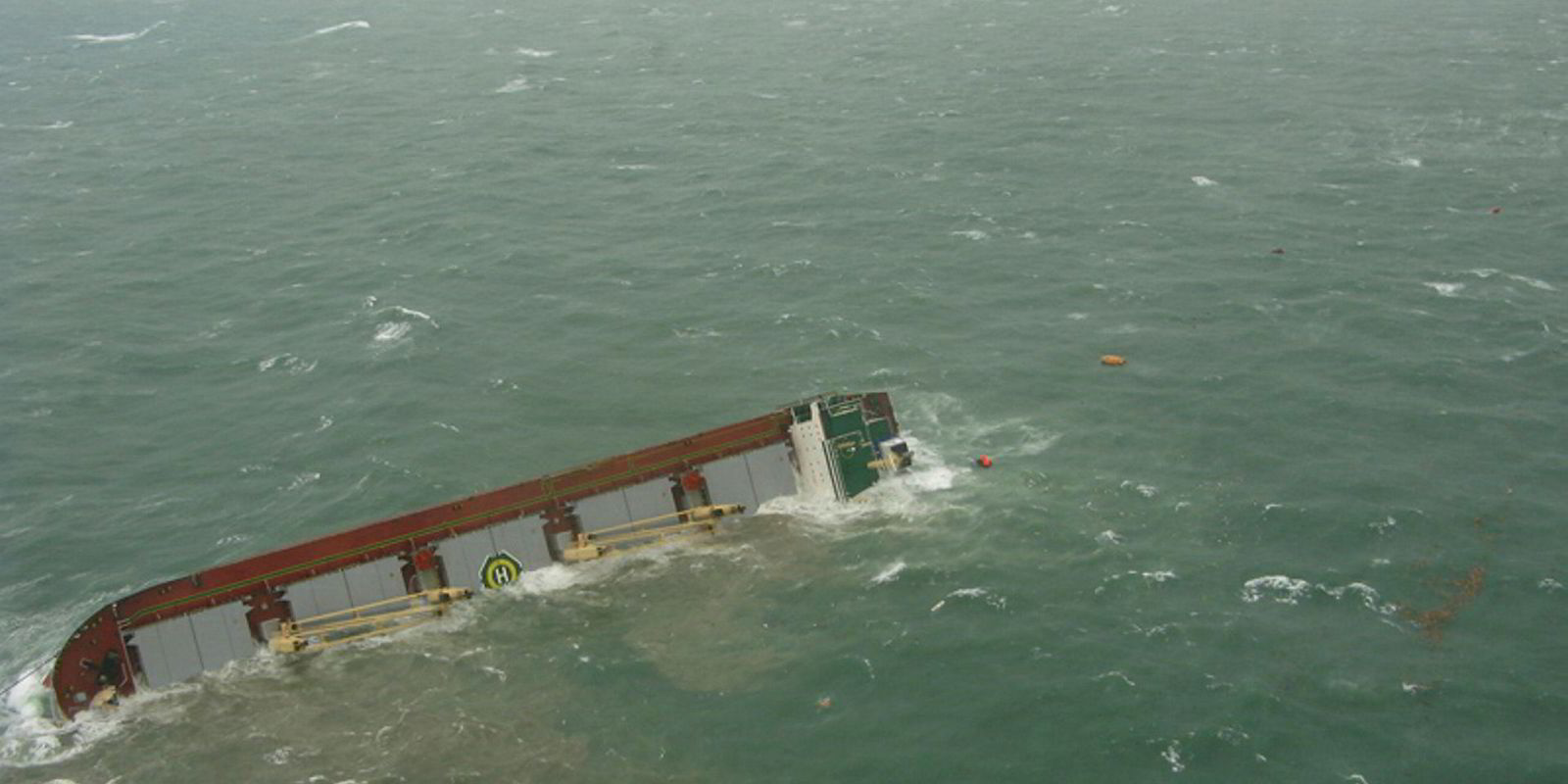When the 56,000-dwt Emerald Star (built 2010) sank off the Philippines last month fully laden with a cargo of nickel ore in a tragedy claiming the lives of 10 crew, it was an all-too-familiar tale.
The same scenario had been played out numerous times over the past 10 years with ships such as the 56,900-dwt Nasco Diamond (built 2009), 45,000-dwt Jian Fu Star (built 1982), 50,000-dwt Hong Wei (built 2001), 56,824-dwt Trans Summer (built 2012) and others.
Emerald Star: The 56,000-dwt bulker sank off the Philippines in October with only 16 of 26 crew members rescued.
Harita Bauxite: The ship sank off the Philippines while carrying Nickel ore, killing 15 in 2013.
Hong Wei: Ten died when the vessel sank in 2010 on a journey from Indonesia to China.
Jian Fu Star: The 45,000-dwt bulker went down while carrying nickel ore from Indonesia to China, leaving 13 dead in 2010.
Nasco Diamond: The supramax bulker sank off the Philippines in 2010, killing 21.
Trans Summer: The 56,800-dwt bulker sank in 2013 while sheltering off Hong Kong from a typhoon. All crew members were rescued.
Vinalines Queen: Only one member of the 21-person crew survived when the vessel went down in 2011.
Sources: TradeWinds, Nautical Institute
These bulkers were loaded with nickel ore in Indonesia and bound for China, only to become destabilised by cargo liquefaction. Many did not make it past the Philippines before going into a heavy list and sinking — the terrifying rapidity of the loss often claiming most of the lives of those onboard.
Other bulk cargoes such as bauxite, as evidenced by the 56,000-dwt Bulk Jupiter (built 2008) loss, and iron ore fines also have had problems with liquefaction.
The issue goes deeper than the total losses that get reported and there are a number of near misses that never come to light.
Following the loss of the Emerald Star, its protection-and-indemnity insurer, the North of England Club, while stressing it had not confirmed liquefaction as the cause of the loss, said it was aware of “several” cases of liquefaction, while the UK P&I Club admitted it had two examples on its books.
The pattern of the losses is now so common and widely known that it begs the simple question: why can’t the stakeholders involved do more to prevent it from happening?
It is a difficult discussion to have with some of the players involved in the industry response, many of which just do not want to talk about it.
Two leading industry bodies, the International Group and Intercargo, declined to talk with TradeWinds about their initiatives, citing “confidentiality”.
There have been insurance, industry and governmental-level talks and seminars taking place in Indonesia, and now the Philippines, since the previous spate of accidents around 2010 to try to enforce compliance with the testing and cargo carriage requirements of the International Maritime Solid Bulk Cargoes (IMSBC) Code.
However, although there is a governmental understanding of the problem in Indonesia, it seems there has been a failure of the competent authority to enforce the correct standards at the waterfront.
The progress of the early talks was also lost when the country imposed a ban on the export of minerals such as nickel ore in 2013, and the resumption of the trade this year has seemingly begun with the same old problems in place.
The waterfront is where ship masters often face pressure to load cargoes and sail even when there may be a concern over the moisture content of the cargo.
The UK P&I Club took the positive step of actually naming the two shippers involved in the liquefaction cases it is handling — Century Park Corp and Platinum Group Metals Corp.
The International Group of P&I clubs has also made a mandatory reporting requirement on vessels loading nickel ore — a move that should ensure the correct IMSBC testing procedures are carried out.
Many find it difficult to understand how, with the reporting requirement, ships could be sailing without the full IMSBC testing procedures first being approved by insurers.
“It’s impossible to think an owner or operator would compromise cover by sailing with a nickel ore cargo without informing his P&I club,” one owner says.
However, there have been issues with falsification of test results in the past.
The other issue has been a lack of transparent flag-state investigations into the casualties. A Bahamas flag report into the loss of the Bulk Jupiter is one of the few examples of a thorough flag-state investigation.
That led to bauxite liquefaction concerns being addressed by the IMO and a change to the categorisation of the cargo under the IMSBC Code and improved testing procedures.
But with nickel ore, there seems to be a broad agreement that the testing procedures and categorisation are fine but there is a problem with making sure they are carried out fully.
Another move has been the development of nickel ore carrier ship designs that increase cargo-hold compartments to improve stability should liquefaction occur. But so far, this has not taken off as dry bulk owners prefer ships that can operate in multiple trades.
The crux of the problem may be that nickel ore trade from South Asia to China is low grade and fundamentally hazardous — and that needs to be addressed.
The trade occurs from remote mining regions where shipments are often controlled by terminals and the shippers.
Thousands of tonnes of earth, mud and rock that have been exposed to the elements are loaded onto bulkers, and only a fraction — something like 2% — is eventually processed out as nickel at the receiving end.
The industry's behind-the-scenes fight to ensure correct testing and carriage procedures are carried out continues.
But, judging by the current rate of progress, it might need Indonesia to fulfil its national policy to develop a nickel ore processing industry before there is finally an end to shipping’s liquefaction problem.



